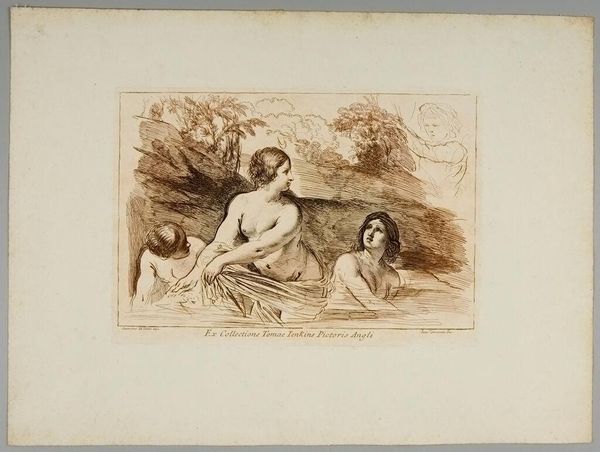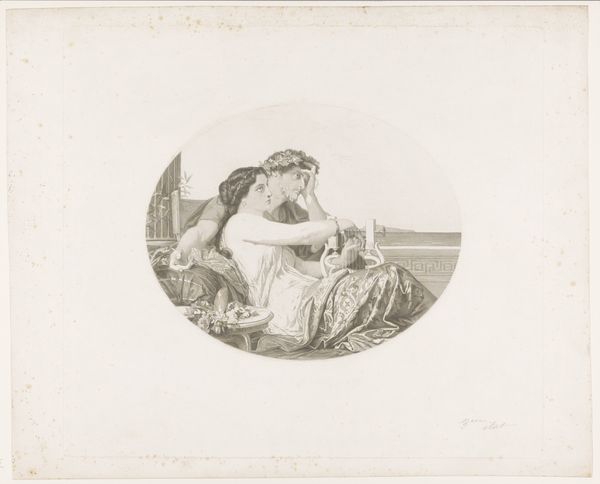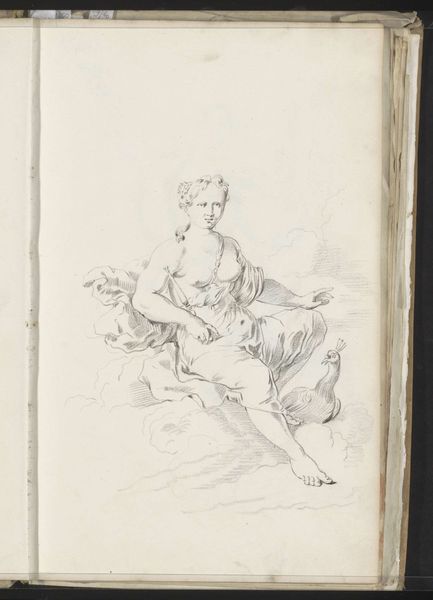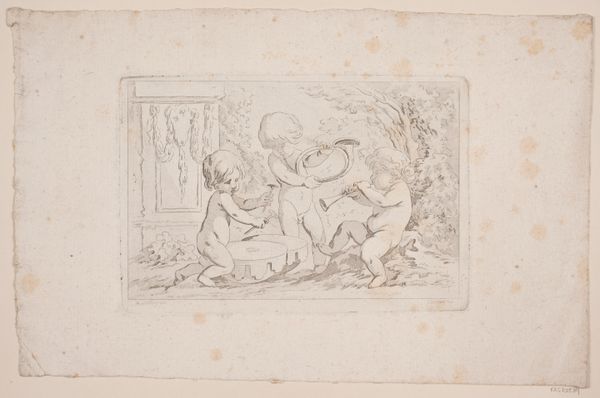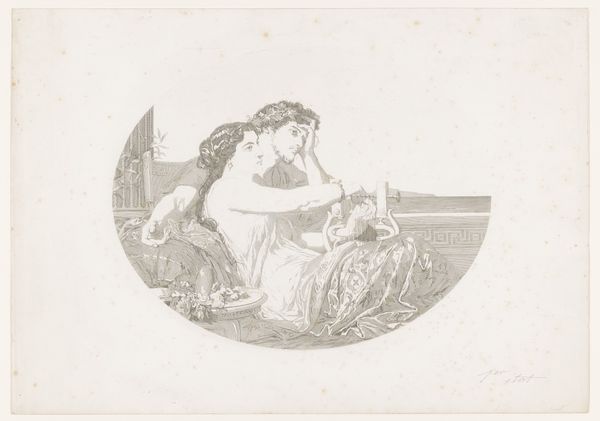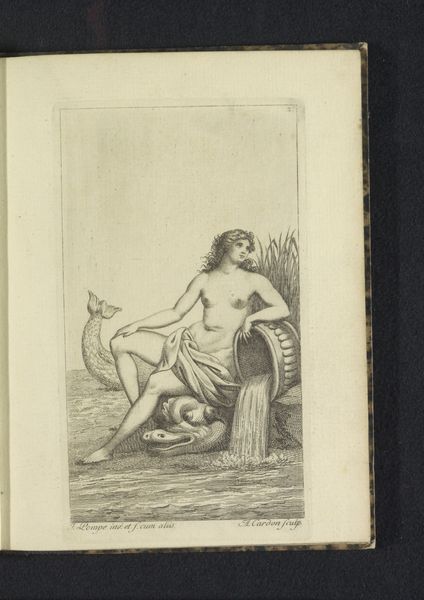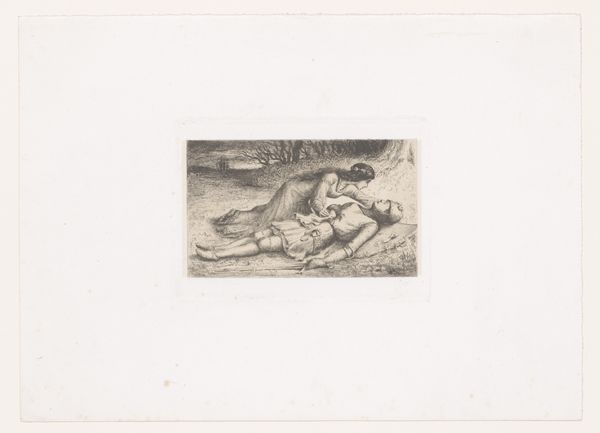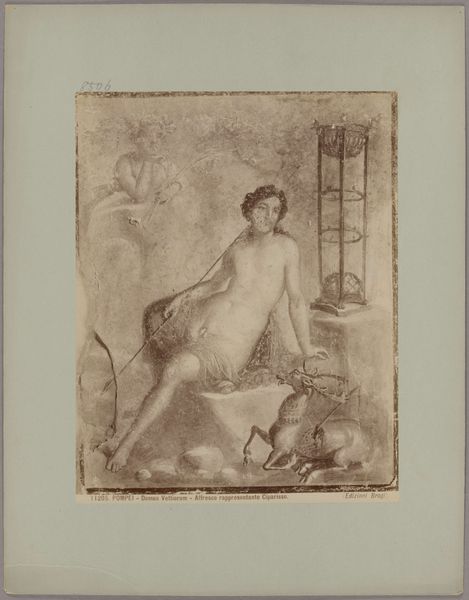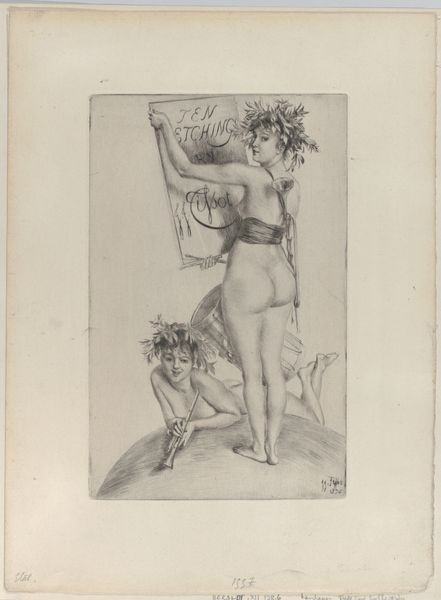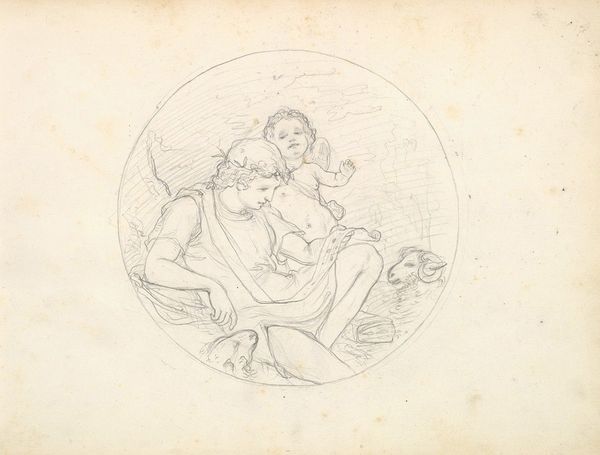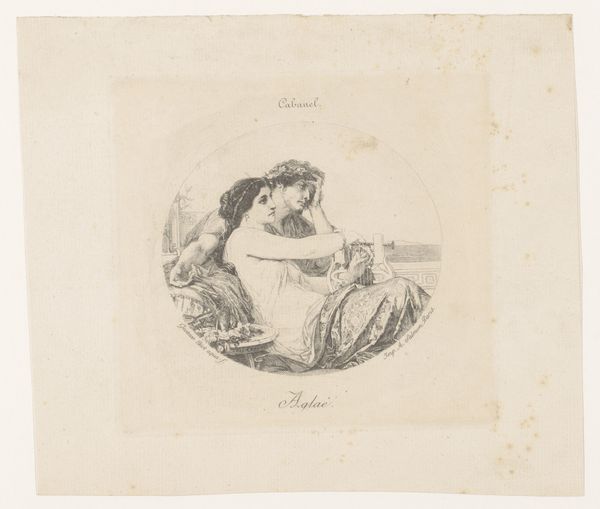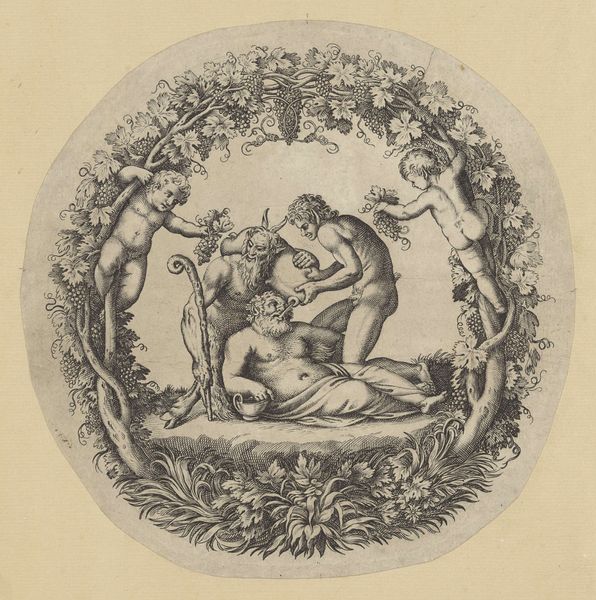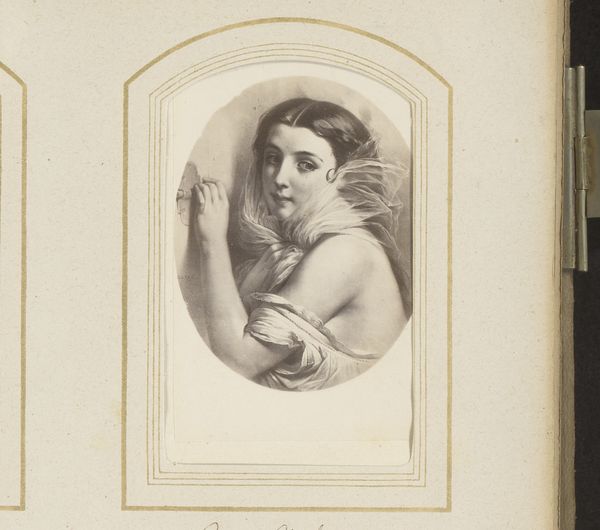
Venus and Cupid (in Sketch Book With Drawings on Twenty-six Leaves) 1844 - 1854
0:00
0:00
drawing, paper, pencil
#
drawing
#
landscape
#
figuration
#
paper
#
cupid
#
romanticism
#
pencil
#
history-painting
#
italian-renaissance
#
nude
Dimensions: Sheet (page): 7 7/8 x 10 7/8 in. (20 x 27.6 cm)
Copyright: Public Domain
Curator: Here we have Frederic Leighton's pencil drawing "Venus and Cupid," dating from between 1844 and 1854. It’s part of a sketchbook and resides here at the Metropolitan Museum of Art. Editor: The image is startlingly soft, almost dreamlike. It reminds me of neoclassical friezes, but something about the medium makes it more accessible. Curator: Leighton was quite invested in the art of antiquity and the Italian Renaissance. This piece is a study; you can see the light pencil strokes used to explore form and composition. It’s intriguing to see these mythological figures stripped of their grand presentation, revealed in an intimate moment. Editor: Intimate is a good word. The softness feels very intentional. Venus doesn't have the confident swagger often afforded to her. There's a vulnerability in her posture, perhaps even a touch of melancholy. And Cupid clings to her like he needs comforting too. It flips the usual power dynamic we see between them, which might tell us something about Leighton's broader views. Curator: Considering his social circles and the prevalent classicism of the era, Leighton was likely trying to capture the aesthetic ideals of beauty while exploring psychological depth. The lack of colour focuses the viewer on the relationship between mother and son. It is hard to dismiss this artistic decision given its subject matter and how that decision echoes through time, shaping ideas about idealized female beauty and romantic love. Editor: Absolutely, and it highlights the way the artistic and social elite interpret and reflect the era’s ideals and norms through their art. We need to challenge whose vision of beauty gets prioritized and explore those historical dynamics and contemporary impacts through critical discussions. The art world has a complicated history. Curator: Indeed, thinking about how artwork reflects, challenges, and solidifies broader historical contexts is necessary. Editor: Well, this artwork makes me question all of the structures from its time period, while challenging current societal ideals. Curator: And for me, the drawing’s placement within a sketchbook opens discussions around artistic process and historical context. Perhaps this offers the visitor something to consider during their own art-viewing experience.
Comments
No comments
Be the first to comment and join the conversation on the ultimate creative platform.

